FUNDING CUTS IMPACT CT HUMANITIES: Help CT Humanities navigate recent funding cuts and continue our vital work across Connecticut. All donations made to CTH will be matched dollar-for-dollar up to $50,000. Donate today!
Now Viewing:
Emergence of Modern America 1890-1930

Charles W. Morgan: New England’s Last Surviving Wooden Whaling Ship
As the last surviving wooden whaling ship of New England, the Morgan is representative of a typical 19th-century whaling vessel.
Read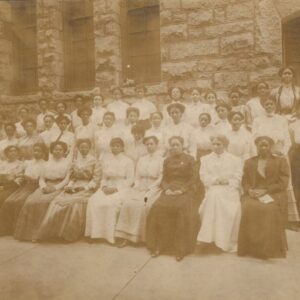
Martha Minerva Franklin: Breaking Barriers for Black Nurses
An activist for Black nurses in the early 20th century, Martha Minerva Franklin worked to end discrimination and secure equal rights for her profession.
Read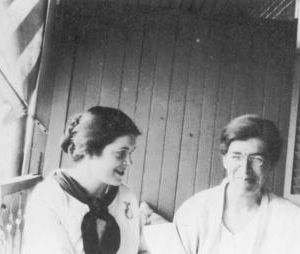
Ethel Collins Dunham: Pioneer in Pediatrics
A student and professor of medicine, Dr. Ethel Collins Dunham devoted her life to ensuring the care of children throughout the early and mid-20th century.
Read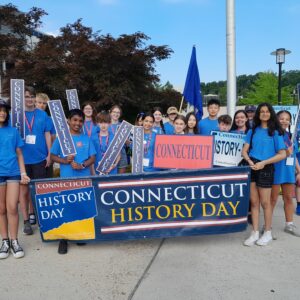
Connecticut History Day 2025: Rights and Responsibilities in History
Connecticut’s people have taken on responsibilities to establish state and national rights through the courts, protests, and everyday acts.
Read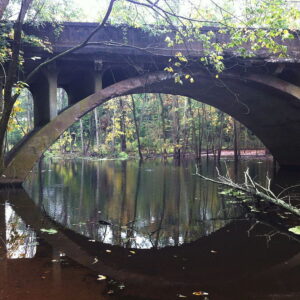
Middletown’s Arrawanna Bridge
Throughout much of the 20th century, the Arrawanna Bridge played a key role in Middletown’s transportation network, carrying traffic from Berlin Street to Newfield Street.
Read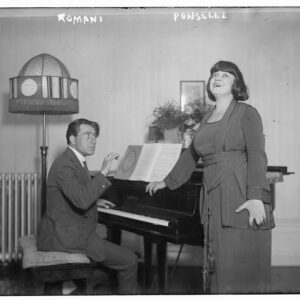
Rosa Ponselle: Meriden’s Famous Musical Daughter
Rosa Ponselle etched her name in history as the first American-born and American-trained singer to star with the Metropolitan Opera Company.
Read
Early Connecticut Gas Light Companies
The first private gas light companies in Connecticut appeared just before 1850 in New Haven, Hartford, and Bridgeport.
Read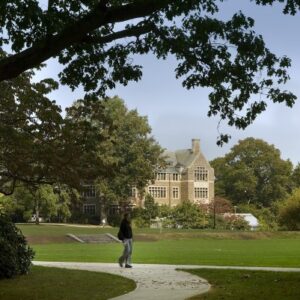
Connecticut College for Women: The State’s First All-Female Institution of Higher Learning
At a time when most universities accepted only men, Connecticut College for Women provided a liberal arts education for women.
Read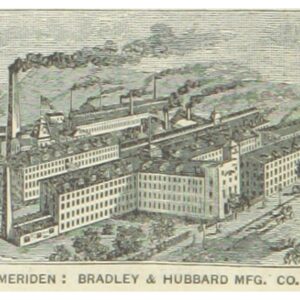
Illuminating Connecticut’s Past: The Bradley & Hubbard Legacy
Meriden’s Bradley & Hubbard Manufacturing Company was an industry-leading American manufacturer of kerosene lamps and metal household items.
Read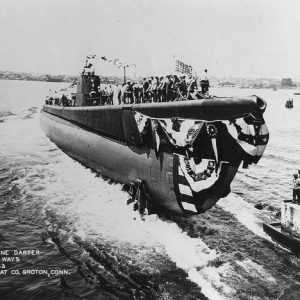
Electric Boat: From Innovation Trials to WWII Submarine Leadership
US submarines accounted for 63 percent of all Japanese ships sunk during WWII—Electric Boat’s vessels were responsible for a significant number of these successful outcomes.
Read
Miss Porter’s School in Farmington
Miss Porter’s School, founded in 1843 in Farmington, is an elite, female, privately funded, 40-acre, educational institution in central Connecticut.
Read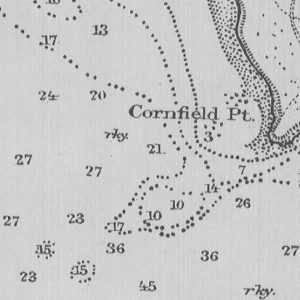
Cornfield Point: Old Saybrook’s Forgotten Scenic Alcove
Cornfield Point, a rocky scenic area bordering the Long Island Sound, is often overlooked but is significant in the state’s maritime and prohibition histories.
Read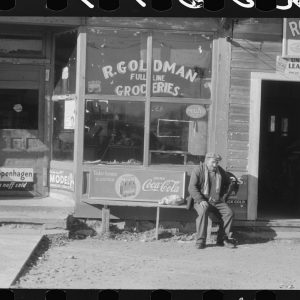
Jewish Farming Communities in Connecticut in the 19th and 20th Centuries
As Jewish immigration to Connecticut increased in the late 19th century, close-knit farming communities formed in Chesterfield and Colchester.
Read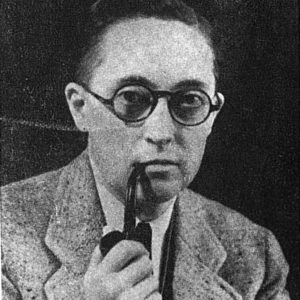
Alan L. Hart: Pioneer in Medicine and Transgender History
An early person to undergo gender affirmation surgery, Alan L. Hart was a physician who pioneered the use of x-ray in early detection for tuberculosis.
Read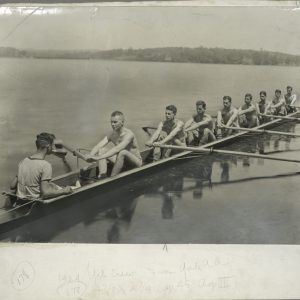
Derby Day on the Housatonic
A rowing event on Lake Housatonic, “Derby Day,” was so popular among Yale students that it drew upwards of thirty to fifty thousand spectators.
Read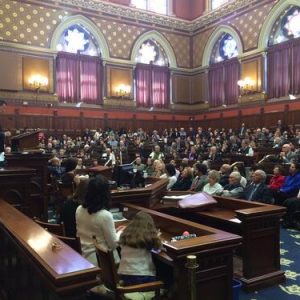
Connecticut and the Armenian Genocide
The Armenian genocide during the early 20th century had a profound impact on Armenian communities and their descendants in Connecticut.
Read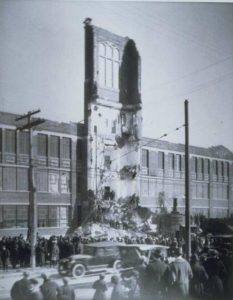
Fuller Brush Tower Collapses – Today in History: March 31
On March 31, 1923, a 56,000-gallon water tank dropped through 4 concrete floors of the Fuller Brush Company Tower.
Read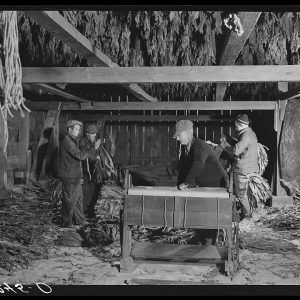
Polish Tobacco Farmers in the Connecticut River Valley
Many Polish immigrants found work on the tobacco farms in the Connecticut River Valley that specialized in the tobacco used for cigar wrappers.
Read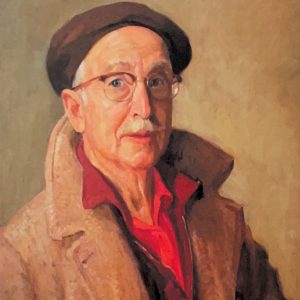
George Laurence Nelson: Artist of Kent’s Seven Hearths
In addition to his artistic pursuits, George Laurence Nelson lived in Kent, Connecticut, for over half a century and restored the historic Seven Hearths house.
Read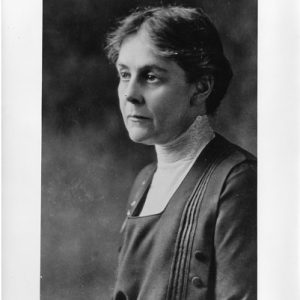
Alice Hamilton: The Nation’s Leading Expert on Industrial Diseases
Dr. Alice Hamilton was a leading authority on industrial diseases and the first female faculty member at Harvard before she retired to Hadlyme, Connecticut.
Read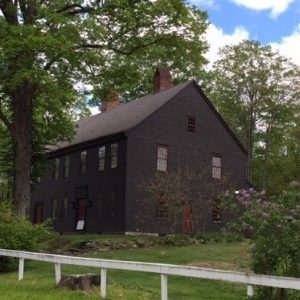
The Welcoming Warmth of Kent’s Seven Hearths
For over 272 years, Kent’s Seven Hearths has lived many lives—from trading post to school to artist’s home to historical society.
Read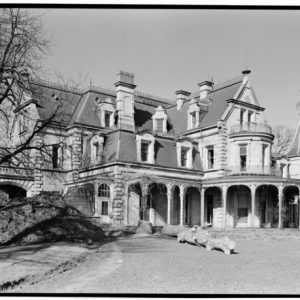
Lockwood-Mathews Mansion Captures the Gilded Age in Norwalk
The Lockwood-Mathews Mansion provides a glimpse into the opulence of the Gilded Age when railroad tycoons built summer homes along the New England shoreline.
Read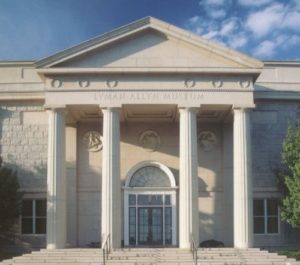
The Lyman Allyn Opens – Today in History: March 2
On March 2, 1932, the Lyman Allyn Art Museum, founded by Harriet Upson Allyn in New London, had its grand opening.
Read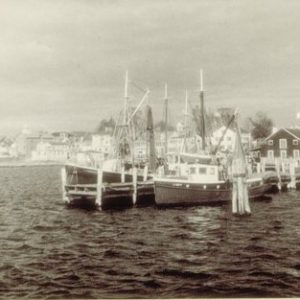
The Sea in their Blood: The Portuguese in New London County
Many Portuguese immigrants came to the US as mariners serving aboard ships, some remained to build new lives and communities in Connecticut.
Read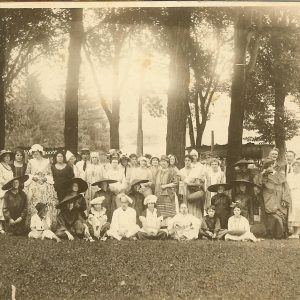
Discovering the Mysterious Identity of the “Kent Limner”
It took over a century to solve the mystery of Ammi Phillips’ identity—one of the most prolific folk portraitists in 19th century America.
Read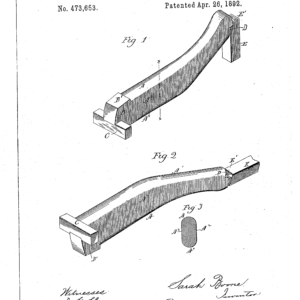
Sarah Boone: First Connecticut Black Woman to Receive Patent
In1892, Sarah Boone of New Haven became the first Black woman in Connecticut to be awarded a patent—for an improvement in the use of an ironing board.
Read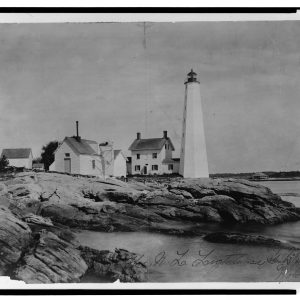
New London Harbor Lighthouse: Connecticut’s First Official Lighthouse
New London Harbor Lighthouse, originally opened in 1761 and rebuilt in 1801, is Connecticut’s oldest surviving and tallest lighthouse.
Read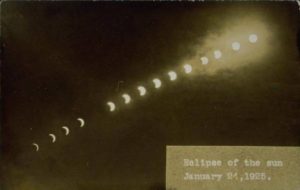
A Total Eclipse of the Sun – Today in History: January 24
On January 24, 1925, Connecticut residents witnessed a full solar eclipse.
Read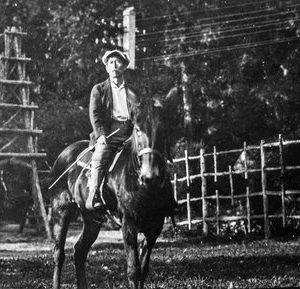
Yukitaka Osaki and Gillette Castle: One of Hadlyme’s First Japanese Immigrants
For over four decades, Japanese-born Yukitaka Osaki worked for Gillette, becoming a recognizable neighbor in the Hadlyme community.
Read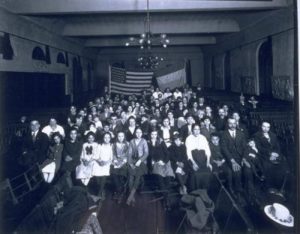
Building an Armenian Community in New Britain
Since the late 19th century, Armenian immigrants and descendants have created a community and shaped New Britain history.
Read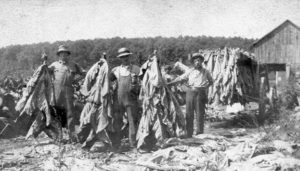
William Pinney Does It All for Ellington
A lifelong resident of Ellington, William N. Pinney served his town and his state up until his death at the age of 90.
Read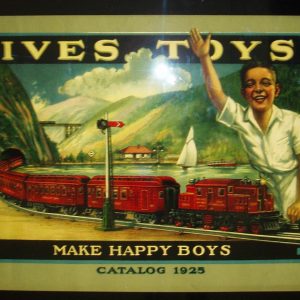
The Ives Manufacturing Company: Connecticut’s Foremost Toy Maker
The Ives Manufacturing Company—arguably Connecticut’s most famous toy company—became known for its variety of clockwork toys and trains.
Read
New London Harbors a German Submarine During World War I – Who Knew?
The German merchant submarine Deutschland made two trips to America, including one to New London, Connecticut, during World War I.
Read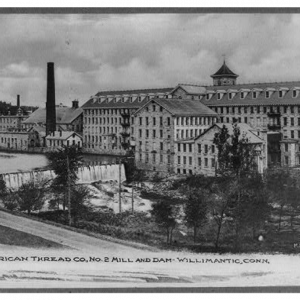
Willimantic’s American Thread Plant–A Multinational Corporate Takeover
American Thread’s arrival in Willimantic in 1899 demonstrates Connecticut’s role in the Progressive Era’s “rise of big business” and “incorporation of America.”
Read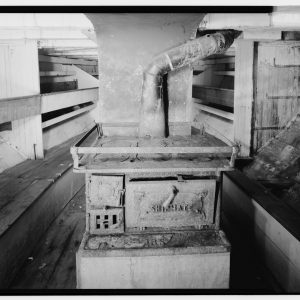
The Stamford Foundry Company Made Notable Stoves
When it ceased operations in the mid-1950s after over 120 years, The Stamford Foundry Company was the oldest known stove works in America.
Read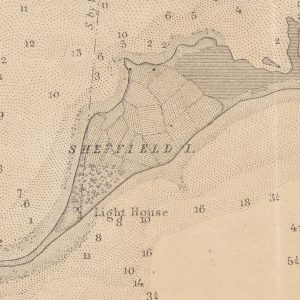
The “Welcoming Beacon” of Sheffield Island Lighthouse
Sheffield Island, is home to one of Connecticut’s historic lighthouses—a stone structure with a celebrated past dating back two hundred years.
Read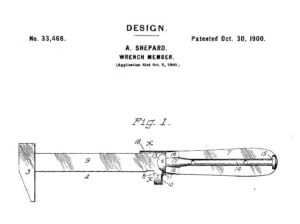
The “Perfect Handle” Hatchet – Who Knew?
In the early 1900s, H.D. Smith and Company of Plantsville began the manufacture of a line of “Perfect Handle” hand tools.
Read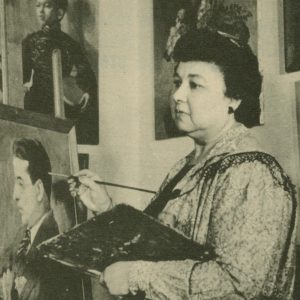
Laura Wheeler Waring: Renowned African American Portrait Artist and Educator
Born in Hartford, Laura Wheeler Waring was an eminent portrait artist of prominent African Americans of the Harlem Renaissance.
Read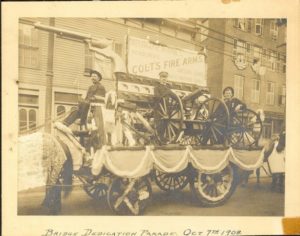
Hartford’s Industrial Day – Today in History: October 7
Hartford celebrated the 1908 opening of the Bulkeley Bridge, which connected Hartford and East Hartford, with a three-day extravaganza.
Read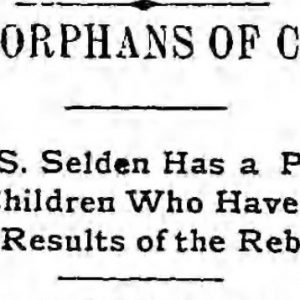
Children of the Reconcentrados: Caroline Selden’s Cuban School
During the Cuban War of Independence, Caroline Selden opened a school for Cuban children in Brooklyn, NY and Old Saybrook, CT.
Read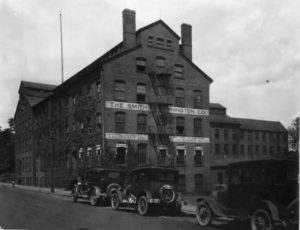
Saddles Fit For a Shah
Since 1794, Hartford-based Smith-Worthington Saddlery has made tack for horses—along with the occasional ostrich harness and space suit prototype.
Read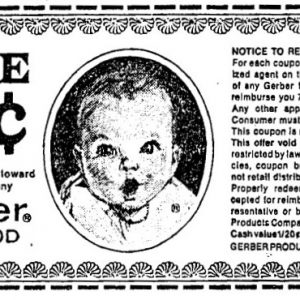
Birthplace of the Gerber Baby – Who Knew?
Westport’s artist Dorothy Hope Smith used her neighbor, Ann Turner, as inspiration for her iconic Gerber Baby trademark drawing.
Read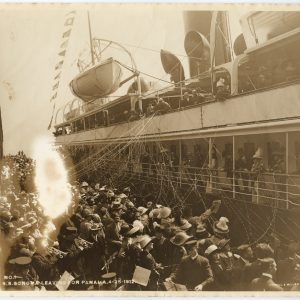
Helen James Chisholm: A Hartford Teacher in Hawaii
Originally from Hartford, Helen James Chisholm’s career took her all the way to the Pacific to teach and run an orphanage.
Read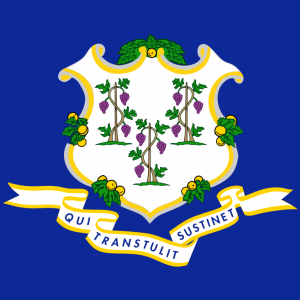
Connecticut’s Official State Flag – Who Knew?
While Connecticut used variations of flags for state functions, the legislature did not adopt an official state flag until 1897.
Read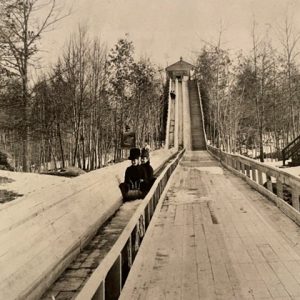
Trumbull’s Parlor Rock Park: A Premier Amusement Center of the Late 19th Century
In Trumbull, the arrival of the Housatonic Railroad brought a lesser known but more entertaining development—one of the country’s first amusement parks.
Read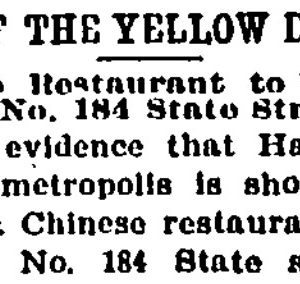
At the Sign of the Yellow Dragon: Hartford’s First Chinese Restaurants
The first Chinese restaurant opened in Hartford in 1898 and evolved as immigrants from different parts of China introduced new tastes.
Read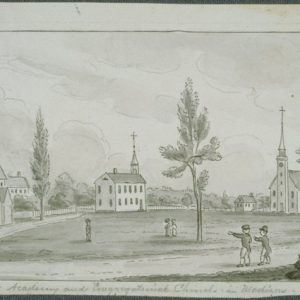
Lee’s Academy: An Icon of Education for 200 Years
For over two hundred years, Lee’s Academy has been a staple of education in Madison, Connecticut.
Read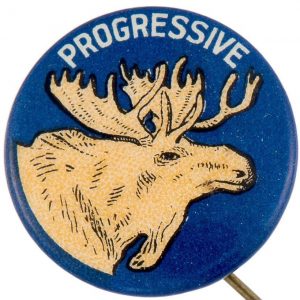
The Bull Moose Party in Connecticut
Connecticut expressed a brief interest in Theodore Roosevelt’s third-party, the “Bull Moose Party,” but the loss of the 1912 election proved career-ending for many candidates.
Read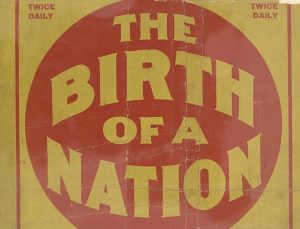
Hartford’s Challenge to “The Birth of a Nation”
D. W. Griffith’s silent movie, the racially charged “Birth of a Nation,” initially played to large audiences in Hartford before meeting with official resistance after World War I.
Read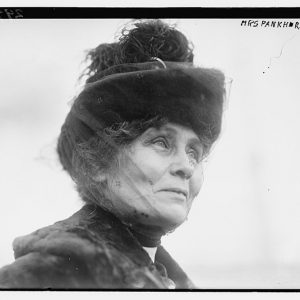
Emmeline Pankhurst’s “Freedom or Death” Speech Energizes Connecticut Women in 1913
In 1913, a famous British suffragist, Emmeline Pankhurst, gave a powerful and memorable speech on the steps of the Parsons Theater in Hartford.
Read
Rosamond Danielson: Windham County Suffragist and Community Leader
Rosamond Danielson was a respected suffragist, World War I worker, and philanthropist from Putnam Heights.
Read
Julian Alden Weir: The “Heart” of American Impressionism
From Windham to Branchville, peaceful Connecticut locales provided Julian Alden Weir the inspiration to create hundreds of paintings and become one of America’s leading Impressionists.
Read
WDRC AM/FM – Connecticut’s Oldest Commercial Radio Station
WDRC is the oldest continuously operated commercial radio station in Connecticut that uses both AM and FM transmissions.
Read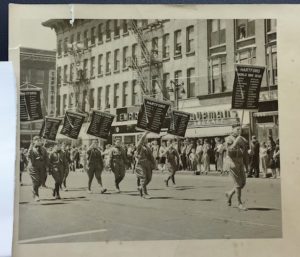
Hartford’s Commemoration of World War I Servicemen and Women
At the end of the First World War, Hartford found a variety of ways to honor the sacrifices of its servicemen and women.
Read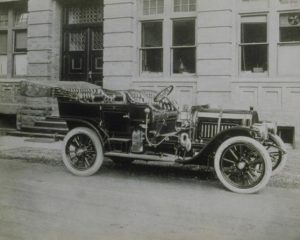
Albert Augustus Pope, Transportation Pioneer
Pope’s bicycles and automobiles not only gave 19th-century consumers greater personal mobility, they also helped propel social change.
Read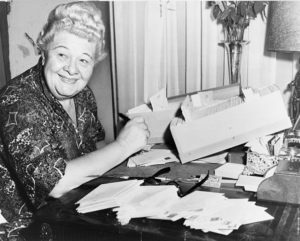
Sophie Tucker, The Last of the Red-Hot Mamas
Hartford’s own leading lady was a lively entertainer whose career spanned over five decades and whose generosity spilled over to various and numerous charities.
Read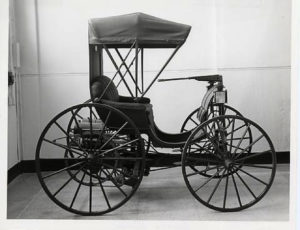
Frank Duryea Drives the First Automobile in Connecticut
In 1893, Frank Duryea, along with his brother, built one of the first cars in the country to have an internal combustion engine.
Read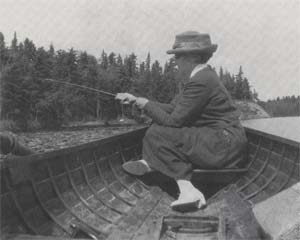
Edith Watson: Camera Artist
Over the five decades Edith Watson traveled around North America, her keen eye and box camera lens captured the otherwise untold stories of women.
Read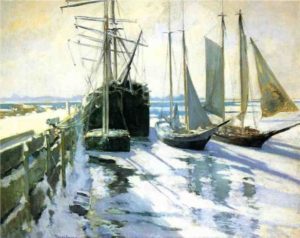
Connecticut and American Impressionism
American Impressionists looked to a New England countryside like that in Connecticut for evidence of a stable, timeless order beneath the dazzle of the ephemeral.
Read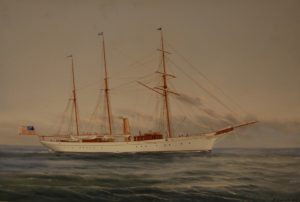
The Slaters Go Round the World
In 1894, a well-to-do Norwich family set sail from New London on a ship outfitted with Persian rugs, oil paintings, a library, and 75 cases of champagne.
Read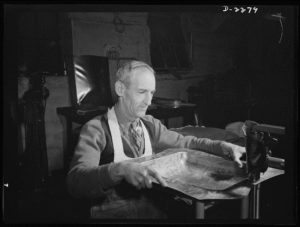
Early 20th-Century Immigration in Connecticut
Connecticut played host to new, vast populations of Italian, Polish, and French Canadian immigrants who helped reinvent the state’s cultural identity.
Read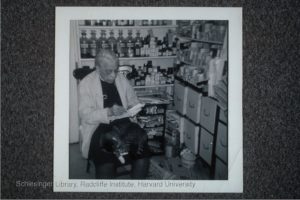
Miss James, First Woman Pharmacist in CT Right in Old Saybrook
Remembering Anna Louise James, the first woman pharmacist in the state of Connecticut.
Read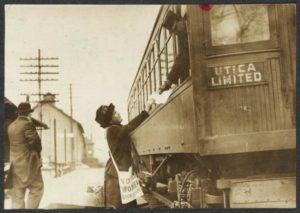
A Feeling of Solidarity: Labor Unions and Suffragists Team Up
The voting booth and the shop floor were two important arenas in the fight for women’s equality.
Read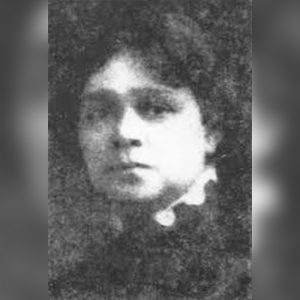
Mary Townsend Seymour: Hartford’s Organizer, Activist, and Suffragist
Mary Townsend Seymour was a leading organizer, civil rights activist, suffragist, and so much more in Hartford during the early 20th century.
Read
Luna Park: A 20th-century Story of Amusement and Morality
The story of Luna Park in West Hartford provides insight into the battles between entertainment and ethics in Connecticut during the Progressive Era.
Read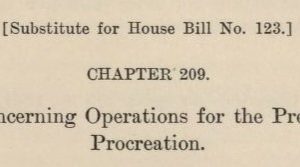
LGBTQ+ Mental Health Treatment in the 20th Century
The simultaneous development of accepted mental health practices and LGBTQ+ visibility over the decades offers a chance to examine how psychological research contributed to the discrimination of LGBTQ+ individuals and communities.
Read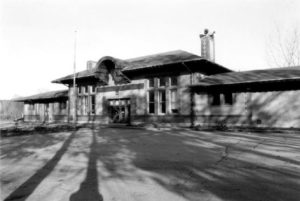
Henry Bacon Helps Beautify Naugatuck
Best known for the Lincoln Memorial, this architect also designed a railroad station, WWI monument, and a bridge for Naugatuck.
Read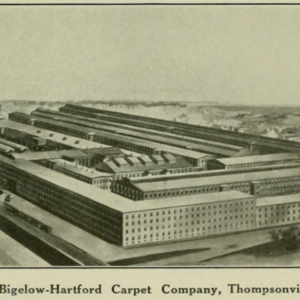
First Connecticut Carpet Mills Emerge in Simsbury and Enfield
In the 1820s, the first two notable carpetmakers emerged in the north central part of Connecticut—the Tariff Manufacturing Company and the Thompsonville Carpet Manufacturing Company.
Read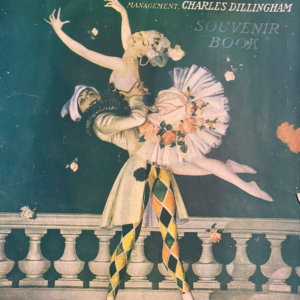
Hartford’s Charles Dillingham Discovered Broadway Stars
After growing up in Hartford, Charles Dillingham explored numerous career paths including newspaper publishing, politics, and—most famously—theatrical managing and producing.
Read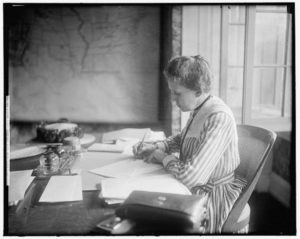
Ida Tarbell: The Woman Who Took On Standard Oil
Ida Tarbell became one of the most famous “muckraking” journalists in 19th century America, thanks largely to her investigation of the Standard Oil Company.
Read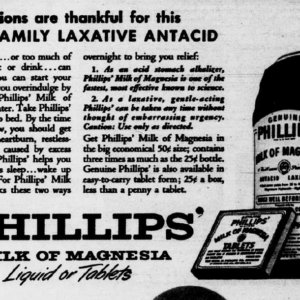
Phillips’ Milk of Magnesia Originated in Stamford
In 1873, Charles H. Phillips patented Milk of Magnesia and his company produced the popular antacid and laxative in Stamford, Connecticut, until 1976.
Read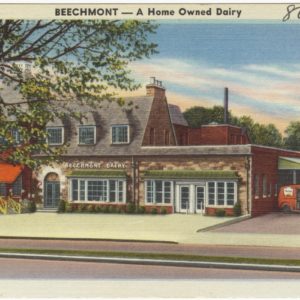
Beechmont Dairy: Bridgeport’s Ice Cream to Die For
Joseph Niedermeier Sr. founded the Beechmont Dairy in Bridgeport in 1906—a popular local business for over 60 years.
Read
Emile Gauvreau and the Era of Tabloid Journalism
Emile Gauvreau, former managing editor of the Hartford Courant, became a pioneer in the rise of tabloid journalism.
Read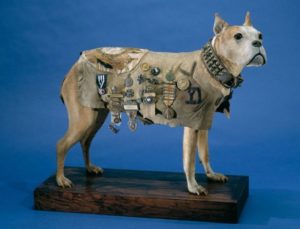
A True Dog of War: Sergeant Stubby
The stray dog “Stubby” quickly became the mascot of the 102nd Infantry during WWI, despite an official ban on pets in the camp.
Read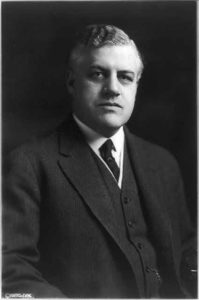
The “Red Scare” in Connecticut
The Palmer Raids, launched in Connecticut in 1919, were part of the “Red Scare” paranoia that resulted in numerous civil rights violations committed by law enforcement officials.
Read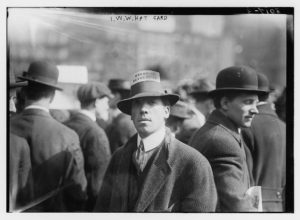
How the Wobblies Won Free Speech
Denied the right to free assembly in public spaces, Connecticut workers joined in a larger national movement of civil disobedience.
Read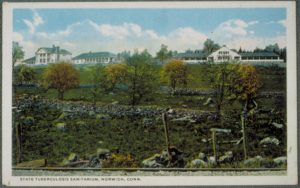
The White Plague: Progressive-Era Tuberculosis Treatments in Connecticut
Treatments for tuberculosis included everything from exposure to extremes in temperature to regimens involving access to the outdoors.
Read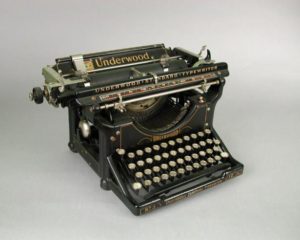
Typing History
Home to companies such as Royal and Underwood, Connecticut became an important manufacturing center for typewriters in the early 20th century.
Read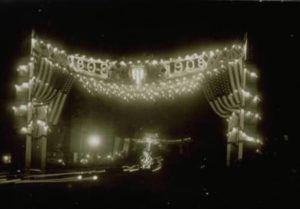
Mighty, Mighty Hartford
In October of 1908, Hartford celebrated the opening of the Bulkeley Bridge, which connected Hartford and East Hartford, with a three-day extravaganza.
Read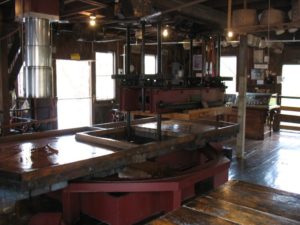
BF Clyde and the Steam-powered Cider Mill – Who Knew?
In 1881, Connecticut resident Benjamin F. Clyde began producing and selling cider in Mystic.
Read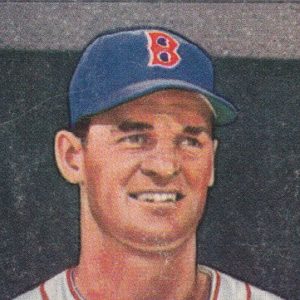
Walt Dropo Stars Throughout New England
Few major league baseball players had rookie seasons as good as Walt Dropo’s while playing for the Boston Red Sox in 1950.
Read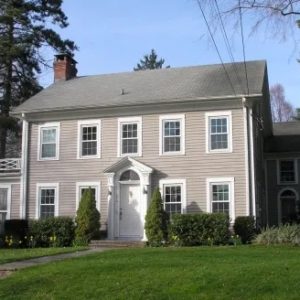
“Washburn Colonials”: Distinguished 1920s Homes Stand the Test of Time
Without formal training, Alice Washburn designed some of Connecticut’s most iconic Colonial Revival buildings of the early 20th century.
Read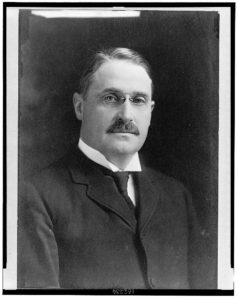
Senator Brandegee Stonewalls Women’s Suffrage
Senator Frank Brandegee of New London vehemently opposed progressive legislation at the national level, particularly when it came to the issue of women’s suffrage.
Read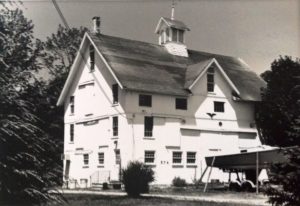
Orange Seeds Yield Corn, Alfafa, Soy, and More
The antecedents of many of today’s most widely utilized crop seeds can trace their lineage back to a company started by the Clark family in Orange, Connecticut.
Read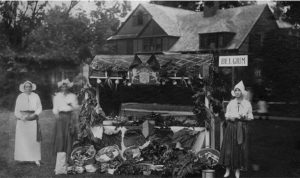
Washington’s Sister Susie Society
The Sister Susie Society in Washington, Connecticut, started out as a reading circle but became a fundraising and World War I relief organization.
Read
Hope on the Wall: Connecticut’s New Deal Post Office Murals
Between 1934 and 1943, the federal government placed murals in twenty-three Connecticut post offices.
Read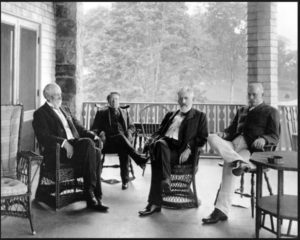
Orville Platt Helps Define International Relations after the Spanish-American War
Orville Platt was a powerful Republican senator from Washington, Connecticut. He presented the Platt Amendment to Congress.
Read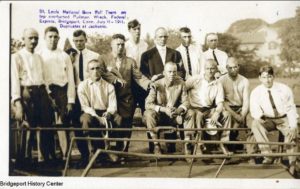
Bridgeport’s Catastrophic 1911 Train Wreck
In the early morning hours of July 11, 1911, a train derailed in Bridgeport, killing fourteen people. Among the first responders were members of the St. Louis Cardinals baseball team.
Read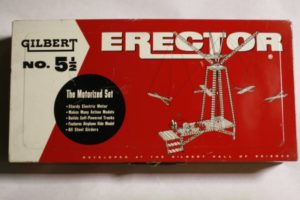
Erector Set Patented – Today in History: July 8
On July 8, 1913, the United States Patent Office issued a patent to Alfred C. Gilbert of New Haven for his “Toy Construction-Blocks.”
Read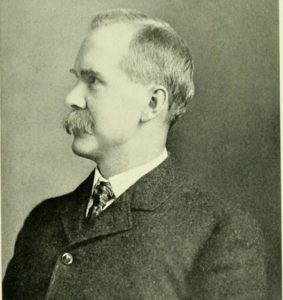
Connecticut Attorney General John H. Light and His Fight for Woman’s Suffrage
Attorney General John H. Light made his pro-suffrage stance public at a time when such advocacy could still lead to criticism
Read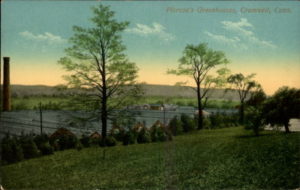
The Rose King of America Transformed Cromwell’s Landscape
Andrew N. Pierson established A.N. Pierson’s, Inc., a small floral nursery in Cromwell that evolved into the largest commercial rose growing enterprise in the country.
Read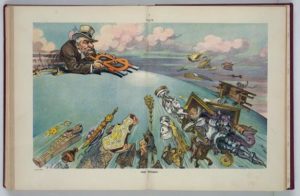
J. P. Morgan’s Connecticut Roots
One of the great financiers of the late 19th and early 20th century, J. P. Morgan was born (and spent much of his youth) in Hartford, Connecticut.
Read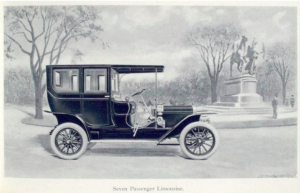
The Hardware City Could’ve Been the Motor City – Who Knew?
In 1903 the Russell & Erwin Company and the American Hardware Corporation purchased the Bristol Motor Car Company of Bristol, Connecticut.
Read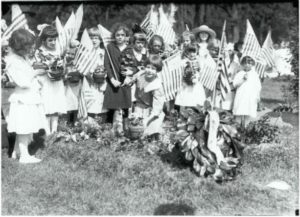
Memorial Day 1920 Brings a Changing of the Guard
In 1920, veterans groups played an active role in orchestrating Memorial Day observances in towns across Connecticut.
Read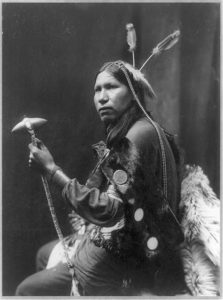
Rediscovering Albert Afraid-of-Hawk
While performing with one of Buffalo Bill’s Wild West shows in Danbury in 1900, Albert Afraid-of-Hawk, or Cetan Kokipa, died.
Read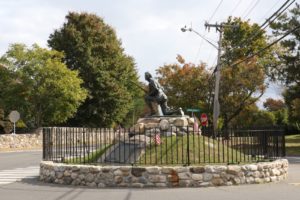
The Minute Man, Westport CT
On the morning of June 17, 1910, over a thousand Connecticut residents descended upon Westport for a patriotic, event-filled unveiling of The Minute Man monument.
Read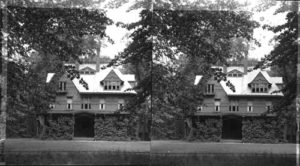
Charles Dudley Warner: 19th Century Writer and Social Commentator
Author Charles Dudley Warner penned significant volumes of work, leaving an impact through his enduring social commentary in the second half of the 19th century.
Read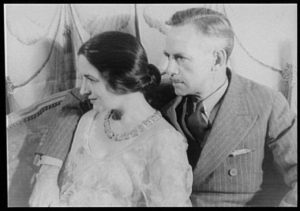
Eugene O’Neill’s Connecticut Connections
Playwright Eugene O’Neill drew inspiration for much of his work from his childhood hometown of New London.
Read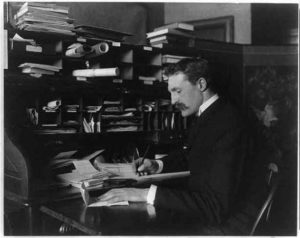
Gifford Pinchot: Bridging Two Eras of National Conservation
Connecticut-born Gifford Pinochet oversaw the rapid expansion of national forest land holdings in the early 1900s.
Read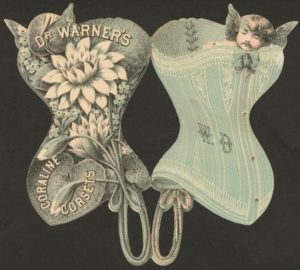
From Bombs to Bras: World War I Conservation Measures Transform the Lives of Women
A shortage of metal during World War I encouraged women’s clothing manufacturers (such as Bridgeport’s Warner Brothers Corset Company) to switch from producing corsets to brassieres.
Read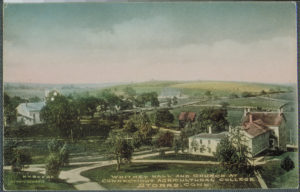
Connecticut Soldiers’ Orphans’ Home
In 1866, the Connecticut Soldiers’ Orphans’ Home opened in Mansfield to house and educate boys and girls left parentless by the Civil War.
Read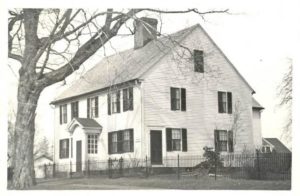
A Pioneering Woman in Business: Martha Parsons of Enfield
Enfield’s Martha Parsons broke new ground in her pursuit of employment opportunities for women. Her family home now belongs to the Enfield Historical Society.
Read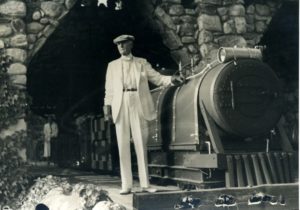
Holmes at Home: The Life of William Gillette
William Gillette was an American actor, playwright, and stage director most famous for his stage portrayal of Sherlock Holmes and for the stone castle he built in East Haddam.
Read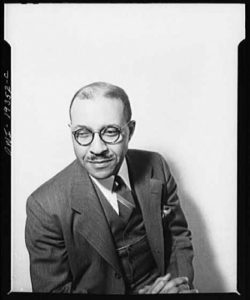
Hartford’s Great Migration through Charles S. Johnson’s Eyes
During the Great Migration of the early 1900s, African Americans from the rural South relocated to Hartford and other Northern cities in search of better prospects.
Read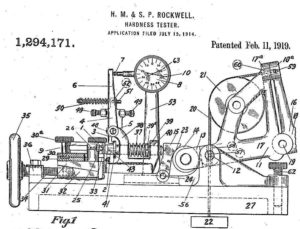
Rockwell Hardness Tester – Today in History: February 11
In 1919, Hugh Rockwell and Stanley Rockwell received a patent for the Rockwell hardness tester, one of the 20th century’s metallurgical innovations.
Read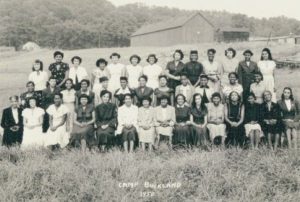
Laboring in the Shade
Thousands of Black Southern students, including a young Martin Luther King Jr., came north to work in Connecticut’s tobacco fields.
Read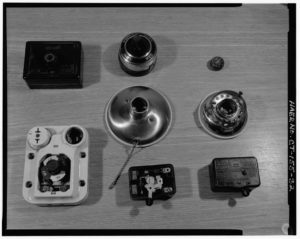
The Rise and Fall of Manufacturing in Bridgeport: The Case of Bryant Electric
For one hundred years Bryant Electric was a staple of Bridgeport industry, adapting to the challenges of the changing industrial landscape in America.
Read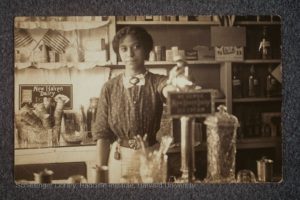
Anna Louise James Makes History with Medicine
Anna Louise James operated a drugstore in Hartford until 1911, making her the first female African American pharmacist in the state.
Read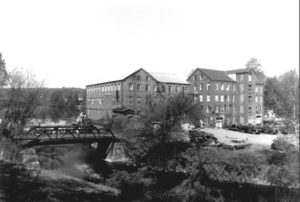
Buckling Up For Auto Safety
Connecticut joined several other states and the District of Columbia mandating seat belt usage for children and adults in automobiles in 1985.
Read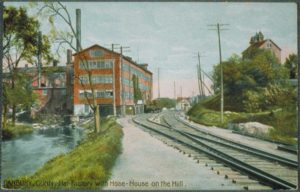
Rivers of Outrage
Pollution of Connecticut’s waters by industrial waste and sewage in the decades after the Civil War was arguably the state’s first modern environmental crisis.
Read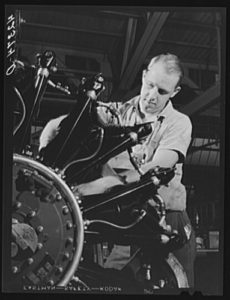
Pratt & Whitney Debuts Wasp Engine – Today in History: December 24
On December 24, 1925, aviation engineer and head of the Pratt & Whitney Aircraft Company Frederick B. Rentschler debuted its first product: the Wasp engine.
Read
The Kewpies Buy A House in Westport
The Kewpies originally appeared as a comic strip in the Christmas issue of the 1909 Ladies Home Journal.
Read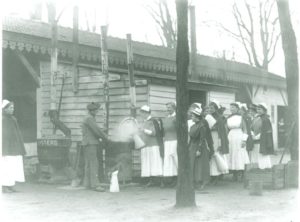
Ruth Hovey: Heroic Battlefield Nurse
A 28-year-old nurse from Hartford, Ruth Hovey served on the battlefields of World War I.
Read
Monumental Bronze Company
The Monumental Bronze Company of Bridgeport was the only producer of a unique type of grave marker in the United States between 1874 and 1914.
Read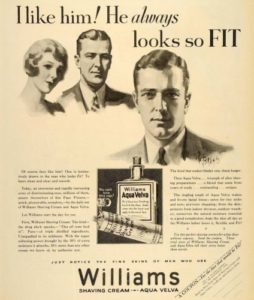
The Aqua Velva State – Today in History: November 17
On November 17, 1917, the J.B. Williams Company of Glastonbury filed a trademark with the US Patent and Trademark Office for the Word Mark “Aqua Velva.”
Read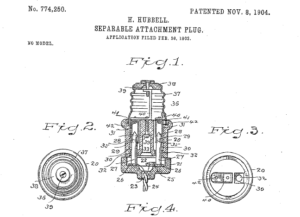
First US Detachable Electric Plug – Today in History: November 8
On November 8, 1904, Harvey Hubbell II patented the first detachable electric plug in the United States.
Read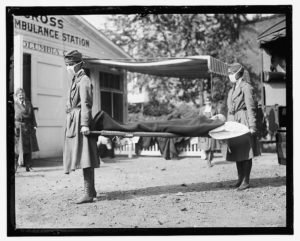
The Spanish Influenza Pandemic of 1918
For those who lived through the 1918 flu, life was never same. John Delano of New Haven recalled, “The neighborhood changed. People changed. Everything changed.”
Read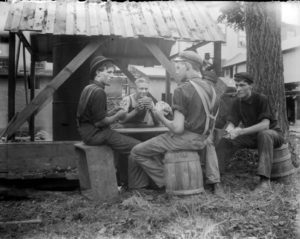
Avon Industry: From Underground to Outerspace
The origins of the Climax Fuse Company date back to 1852 in Avon, Connecticut.
Read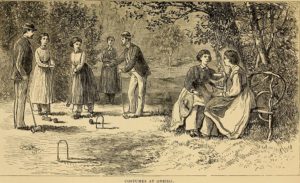
The Wallingford Oneida Community
In the late 1800s, Wallingford was home to a small branch of the Oneida Community.
Read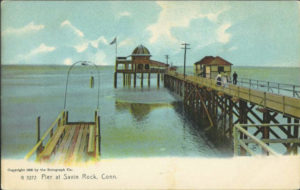
Savin Rock Park: “Connecticut’s Coney Island”
Savin Rock Park was a seaside resort constructed in the late 19th century in the modern-day town of West Haven.
Read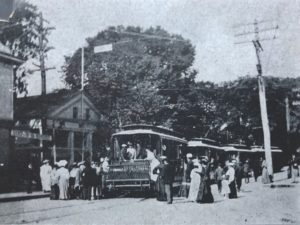
Trolley Campaigners Storm Small Towns and Votes for Women is the Battle Cry
In the wake of a 1912 trolley campaign, the woman’s suffrage movement rapidly gained ground across Connecticut.
Read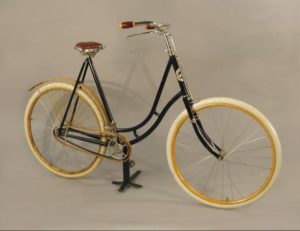
A Revolution On Two Wheels: Columbia Bicycles
Albert Pope’s company not only played a prominent role in developing improved bicycle designs, it also developed the market for them.
Read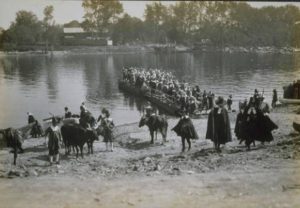
Colonial Revival Movement Sought Stability during Time of Change
The Colonial Revival was national in its scope, but as a state rich in historic resources, Connecticut became inextricably linked with the movement.
Read
Setting Speed Limits – Today in History: May 21
On May 21, 1901, Connecticut passed An Act Regulating the Speed of Motor Vehicles.
Read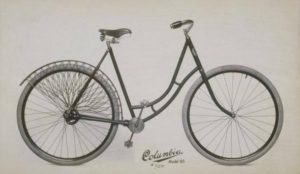
Albert Pope Pioneered Bicycles for Women
Hartford-based inventor Albert Pope saw his first bicycle at the 1876 Centennial Exposition in Philadelphia and was so impressed that he went to Europe to study how bicycles were made.
Read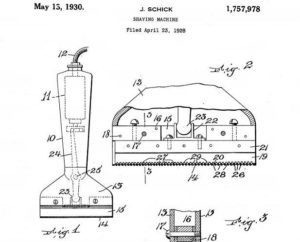
Jacob Schick Invents the Electric Razor – Today in History: May 13
On May 13, 1930, Colonel Jacob Schick obtained patent No. 1,757,978 for his dry electric shaver.
Read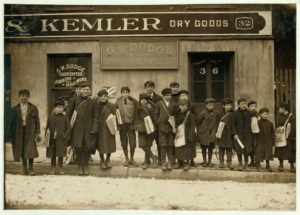
The Newsies Strike Back
Despite organizing in 1909 to fight pay cuts, ultimately, vending machines and changing business models brought an end to the era of the Hartford newsie.
Read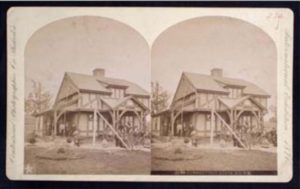
Take Me to the Fair: Connecticut Exhibits at the International Expositions
Connecticut took part in many of the great World’s Fairs, especially those held in North America.
Read
The Hartford Wheel Club: Disparity in the Gilded Age
Despite the wealth found in some sections of the city, the economic volatility of the Gilded Age produced hard times for residents of Hartford.
Read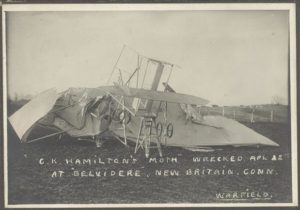
Hamilton Wrecks Aeroplane – Today in History: April 22
On April 22, 1911, aviation pioneer Charles Hamilton crashed his brand new, all white, biplane the “Moth” at Andrews Field in New Britain.
Read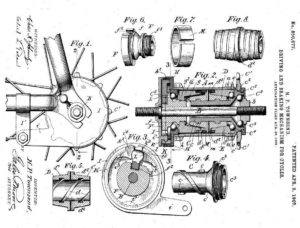
The Coaster Brake – Today in History: April 9
On April 9, 1907, Harry Pond Townsend patented the driving and braking mechanism for cycles, the first device to combine driving, braking, and coasting.
Read
War and the Fear of Enemy Aliens – Who Knew?
…that Greenwich had a special police unit trained to handle suspected foreign agents operating in Connecticut.
Read
World War I Flying Ace Raoul Lufbery
Although his time as a Connecticut resident was short, this aviator left his mark on Wallingford and a generation fighter pilots.
Read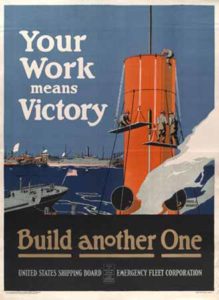
Freighter Worcester Launched – Today in History: April 5
On April 5, 1919, the freighter Worcester was launched in Groton in support of the war effort for the Emergency Fleet Corporation of the US Shipping Board.
Read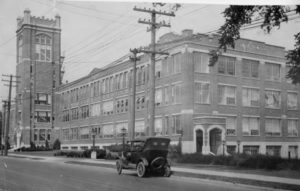
Hartford’s Fuller Brush Company Goes Door-to-Door Across US
Founded in 1906 by Alfred C. Fuller, the Fuller Brush Company was one of Connecticut’s most notable corporations.
Read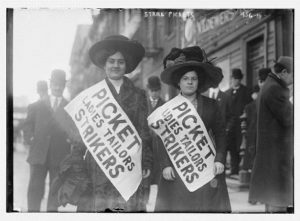
Triangle Shirtwaist Fire: Connecticut Lessons from a Tragedy
While the Triangle Shirtwaist fire in New York City is one of the most famous tragedies behind the organized labor movement, Connecticut had its share of equally dangerous work environments in the early 20th century.
Read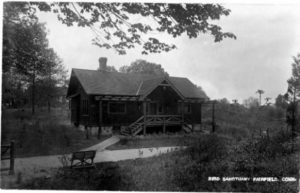
A Woman Ahead of Her Time: Mabel Osgood Wright
This writer and photographer founded the Connecticut Audubon Society and created Fairfield’s Birdcraft Sanctuary.
Read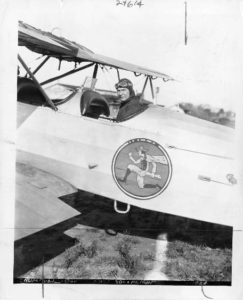
John H. Trumbull: Connecticut’s “Flying Governor”
In 1926, at the age of 53, Connecticut governor John H. Trumbull received his pilot’s license. Piloting flights to his own appointments, he became known as “The Flying Governor.”
Read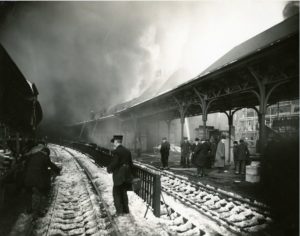
Fire and Ice: A Very Bad Week in 1914
Hartford’s Union Station and Allyn Hall caught fire on two different days in February. Only one still stands today.
Read
The Astronomical Event of the Century
Church bells chimed and factory whistles blew and automobiles, trains, and trolleys throughout the state came to a standstill.
Read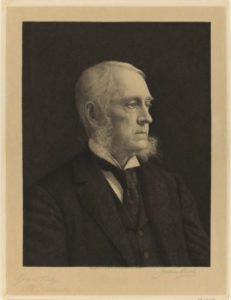
Charles McLean Andrews and Evangeline Walker Andrews
Charles McLean Andrews was one of the most distinguished historians of his time, generally recognized as the master of American colonial history.
Read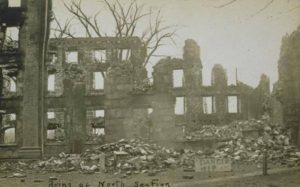
Fire at Wesleyan’s North College – Today in History: March 1
On March 1, 1906, North College at Wesleyan University in Middletown was destroyed by fire.
Read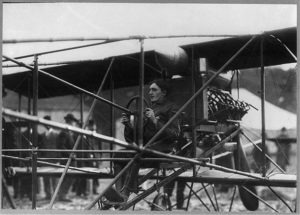
Hamilton Breaks Air Records – Today in History: June 13
Charles Keeney Hamilton completed the first round-trip journey ever made between two large cities in an airplane in the United States.
Read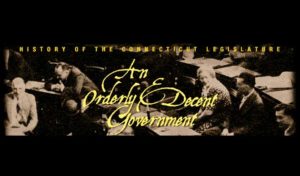
An Orderly & Decent Government: Business and Government, 1905-1929
The early years of the 20th century were a time of vigorous political and social reform.
Read
An Orderly & Decent Government: A Clash of Cultures, 1888-1905
In the last decades of the 19th century, Connecticut was transformed by a massive flood of immigrants fleeing political and economic instability.
Read
An Orderly & Decent Government: Searching for the Common Good, 1905-1929
J. Henry Roraback dominated Connecticut like no political leader before him.
Read
An Orderly & Decent Government: Significant Events & Developments, 1905-1929
Early 20th century life in Connecticut was marked by the election of 1912, US entry into World War I, and the Great Depression.
Read
An Orderly & Decent Government: Making Self-Government Work, 1905-1929
With war’s end, suffrage advocates stepped up their campaign for equal rights.
Read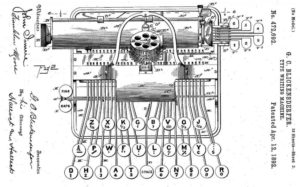
The Portable Typewriting Machine – Today in History: April 12
On April 12, 1892, the first US patent for a truly portable typewriter was issued to George C. Blickensderfer of Stamford.
Read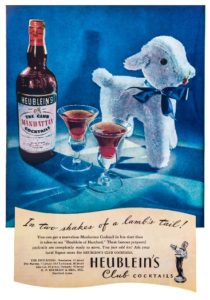
Just Pour Over Ice – Who Knew?
The Heublein Restaurant served its thirsty customers pre-mixed cocktails that became so wildly popular they had to build a distillery just to meet demand.
Read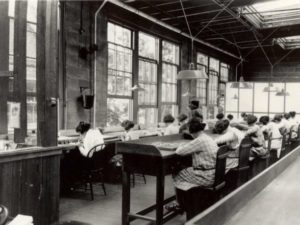
Waterbury’s Radium Girls
In the early 20th century, girls working at the Waterbury Clock Company faced death and disease from exposure to radium in the workplace.
Read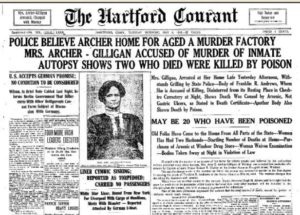
Windsor’s “Murder Factory”
It only took 4 hours for a jury to convict Amy Duggan Archer Gilligan of operating, what the Hartford Courant labeled, a “murder factory.”
Read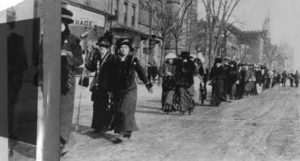
Looking Back: How the Vote Was Won
Today it is the Katharine Hepburn Cultural Arts Center (The Kate) but it began as the Old Saybrook Musical and Dramatic Club.
Read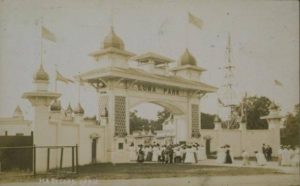
Luna Park – Who Knew?
Luna Park in West Hartford was a popular attraction at the turn of the 20th century but was demolished in the 1930s to make way for a factory.
ReadMore Articles




